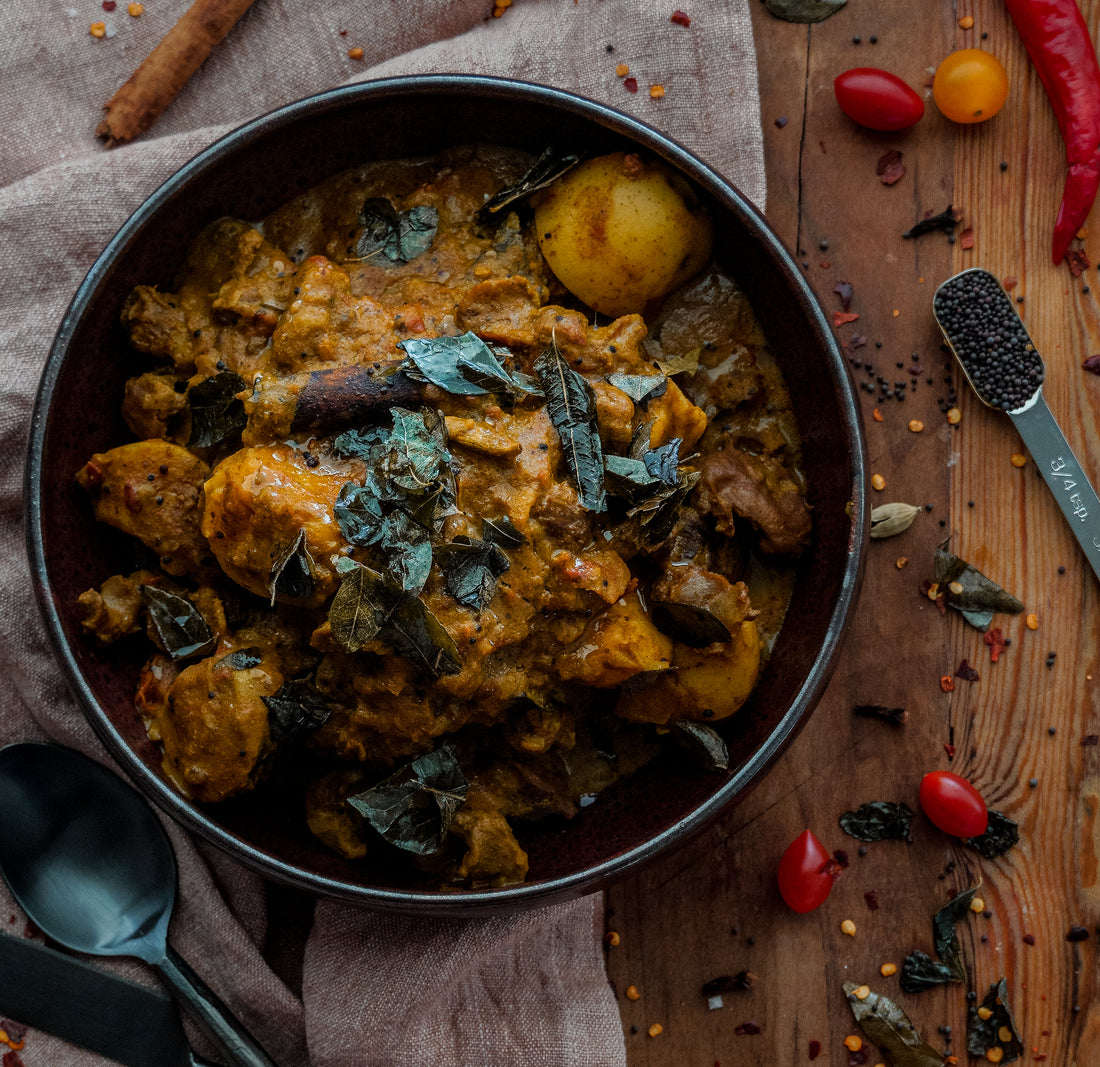
Basic Principles of Good Curry
Tips and Tricks to Up Your Curry Game
To stay true to the Indian roots that formed the origin of curry, there are some basic principles to follow. From the right selection of spices and the processes involved to get the most flavour out of them, to the right order of ingredients, there’s a few basics involved in curry that can elevate the dish immediately.
While a good deal of these basics will be related back to Indian and Sri Lankan cooking, most of these principles apply to the massive variation of curry dishes worldwide. To ensure that your curry isn’t just a mish mash of spice and protein but a perfectly balanced, fully formed, and genuinely great tasting dish, have a read of some of these curry basics!
Spices
Dried Spice vs. Fresh Spice
Different cuisines use different spices to flavour their dishes. However, these spices can be split into two distinguishing categories: dried spices versus fresh spices. Some spices can be used fresh but taste better once dry roasted and vica versa, so it’s important to figure out how to best utilise various spices.
Dried Spice
Dry roasting spices means to heat spices on a dry pan, slowly heating until the aromas are released. Indian cuisine prominently features dry roasted spices crushed into garam masala, a spice powder blend that can feature many different spices. Dry roasting spices accomplish a few different things:

- It releases the aromatics and provides a deeper, toastier flavour. With some spices such as fenugreek seeds, dry roasting gets rid of the bitterness and increases the nuttiness of the spice.
- It removes the moisture content of the spices. With Indian spices for curry, a mixture of spices is dried and crushed to make a garam masala, the most important part of an Indian curry. Dry roasting means the spices crush and blend together much easier.
- Dry roasted spices keep for a lot longer than fresh spices. In India, the reason for dry roasting spices and preparing the garam masala spice powder is so that when monsoon season arrives, the spices stay good for much longer.
Fresh Spice
Fresh spice used in curries can be either made into a spice paste often seen in Southeast Asian cuisine or added fresh to curries towards the end of the cooking process to preserve the natural flavour.

- Spice pastes in Southeast Asian countries like Thailand and Indonesia usually feature a mix of dry and fresh spices and aromatics such as lemongrass, galangal or ginger, chillies, cardamom, coriander seeds, garlic etc. These spice pastes are pre-blended right before the cooking process to release the freshness of the flavours before frying off in a little bit of oil.
- With some fresh spices, it requires frying in oil to really get the flavour to flow. Mustard seeds and curry leaves are some examples in Sri Lankan cooking that benefit from being shallow fried before incorporating into the dish.
- Balance is important when using fresh spices as the flavour is a lot stronger than dried variations.
When To Add Spices
Different spices need different cooking times to use them correctly. Some lose flavour the longer you cook them and others just increase in flavour. It’s usually hard to distinguish which spices go in when but a general rule of thumb is: whole fresh spices should be toasted first then put to the side, aromatic spices such as garlic, onion, ginger etc. go in after to form the base (more on that soon), then after veggies/protein is incorporated, dry, powdered, and toasted spices go in.
There are definitely exceptions to the rule but try not to cook a lot of the fresher whole spices such as cardamom, fenugreek leaves, star anise, kaffir lime leaves, Kashmiri chillies etc. for more than 30 minutes.
The Base

The base of a curry is one of the most important parts of the dish. In curries, the order in which you put your ingredients into the heat is incredibly important. Like spices, these ingredients each need various cooking times and techniques to bring out the flavour you need.
The base, therefore should be the first lot of ingredients, usually made up of aromatics. The first ingredient in many curry dishes is onion. Onion only gains more flavour as the cooking process goes on, and depending on the dish, caramelisation is incredibly important to add sweetness to the curry, so longer cooking time on onion is encouraged.
To add to the base, the other aromatics are then added which may include garlic, ginger, chilli (adding earlier means a milder curry), lemongrass, galangal etc. This releases the aromatic oil that flavours the whole dish moving forward.
Then, depending on the type of curry, this base is either finished (like in Japanese curry) or ingredients like tomato (if the curry is tomato-based) and sambal or curry paste (like in Malaysian or Thai) is added to finish the base and fully develop the flavour profile of the curry.
Balance
Finally, the balance of flavours is the final aspect that can make any curry great. To make a curry… a curry, balance must be achieved from sweet to salty to sour. The best way to ensure this balance is achieved is to taste constantly throughout the cooking process, adjusting the flavours as you go.
Sweet
Sweetness in curries can come in a variety of ways but the most common way is from the sweating and caramelisation of onions to form the base. Otherwise ingredients like jaggery, cane sugar, or coconut milk will bring out the sweetness of the spices.
Salty
Saltiness is an important aspect of any dish, as it enhances every flavour and every spice in the dish. It also helps to even out some of the bitterness that can come from some spices. Adding salt into curry is the simplest way to do this but Thai and Malaysian curries often use fish sauce to add saltiness.
Spicy
If there’s not a bit of spice, it’s not a curry. Chilli is one of the main ingredients with curry, whether it be fresh chillies blended into a spice paste or chopped and fried with the aromatics, dried chillies added into the sauce to slowly release flavour, or chilli powder blended into garam masala or a blend. Add or remove to your preference!Sour
Sourness brings out some of the more nuanced flavour of some spices and balances out the heat. In Southeast Asia, India, and Sri Lanka, tamarind or tamarind paste is the main way to add sourness and colour to curry. Other ingredients such as yogurt, amchur (green mango) powder, green papaya, and lime juice can add some freshness and sourness to dishes as well.
Umami
Finally, the final taste element that people often forget about - Umami. Described as a savoury or meaty taste, umami is necessary for adequate depth of flavour. The most common forms of umami in curry include: onion, garlic, tomatoes, meat or veg stock, miso, MSG etc. One Indian ingredient that is not too well known outside of the country is asafoetida. This ingredient smells incredibly pungent when first cooking but adds unbelievable depth of flavour and umami.
To get your hands on some great-quality authentic spices and ingredients, check out our Signature Spice Boxes for a beautiful spread that will set you up for success!
Also discover more content on the world of spices at our blog page here!


